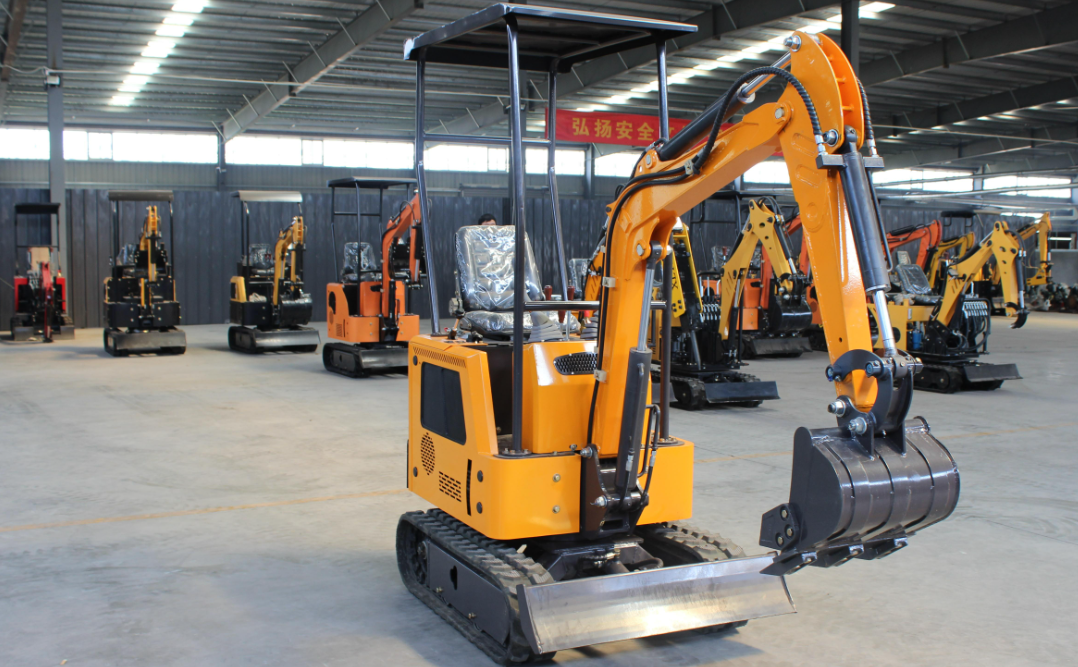Introduction
Mini excavators have become ubiquitous in construction and landscaping projects due to their versatility and compact size. These machines offer a wide range of capabilities, including digging, trenching, and material handling. However, a common question arises: how deep can a mini excavator actually dig? The answer depends on several factors, including the machine's size, attachment type, ground conditions, and operator skill.

Understanding Digging Depth
Manufacturers often provide a "nominal digging depth" for their mini excavators. This figure represents the maximum theoretical depth the machine can achieve under ideal conditions. However, it's important to note that nominal digging depth is not always a reliable indicator of real-world performance.
Operational Digging Depth
The actual digging depth a mini excavator can achieve, or its "operational digging depth," is influenced by a variety of factors:
· Machine Size and Weight: Larger mini excavators, typically in the 3-ton to 5-ton class, generally have greater digging depth capabilities compared to smaller models. The increased weight and power of larger machines allow them to penetrate deeper into the ground.
· Attachment Type and Configuration: The choice of attachment significantly impacts digging depth. A standard digging bucket is suitable for general excavation tasks, while a ditching bucket is designed for creating narrow, deep trenches. The configuration of the attachment, such as the angle of the bucket, can also affect digging performance.
· Ground Conditions: The type of soil, rock formations, and moisture content can significantly influence digging depth. Soft, loose soil is easier to excavate than hard, compacted soil or rocky terrain.
· Operator Skill and Experience: A skilled operator can maximize the digging depth of a mini excavator by using efficient techniques and avoiding excessive force. Proper training and experience are crucial for achieving optimal performance.

Digging Techniques and Strategies
To achieve maximum digging depth, operators can employ various techniques:
· Basic Digging Techniques:
o Straight Digging: This technique involves digging straight down into the ground to create a hole or trench.
o Sidecasting: This method involves digging to one side and casting the excavated material to the opposite side.
o Trenching: This technique is used to create narrow, deep trenches, often using a specialized ditching bucket.
· Advanced Digging Techniques:
o Using Specialized Attachments: Hydraulic thumbs and tilt rotators can enhance digging capabilities and allow for more precise excavation.
o Optimizing Bucket Angle and Hydraulic Flow Rate: Adjusting the bucket angle and hydraulic flow rate can improve digging efficiency and depth.
· Overcoming Obstacles:
o Dealing with Rocks and Tree Roots: Using a hydraulic breaker or other specialized tools can help break up hard obstacles.
o Digging in Confined Spaces: Careful planning and precise maneuvering are essential when working in tight spaces.
Safety Considerations
Safety is paramount when operating a mini excavator. Here are some important safety considerations:
· Machine Stability: Ensure the machine is stable on the ground, especially when working on slopes or uneven terrain.
· Operator Safety: Wear appropriate personal protective equipment (PPE), such as a hard hat, safety glasses, and gloves.
· Environmental Impact: Minimize soil erosion and water pollution by implementing proper erosion control measures and avoiding unnecessary excavation.
Case Studies and Real-world Examples
· Successful Digging Operations: A skilled operator used a 5-ton mini excavator to dig a deep trench for a utility line in challenging soil conditions.
· Digging Challenges and Lessons Learned: A less experienced operator encountered difficulties digging through rocky terrain, highlighting the importance of selecting the right attachment and using proper techniques.
Conclusion
While mini excavators are capable of digging to significant depths, the actual achievable depth depends on various factors. By understanding these factors and employing proper techniques, operators can maximize the digging performance of their machines. Additionally, prioritizing safety and environmental considerations is crucial for responsible and efficient excavation.
Post time:Nov.05.2024
